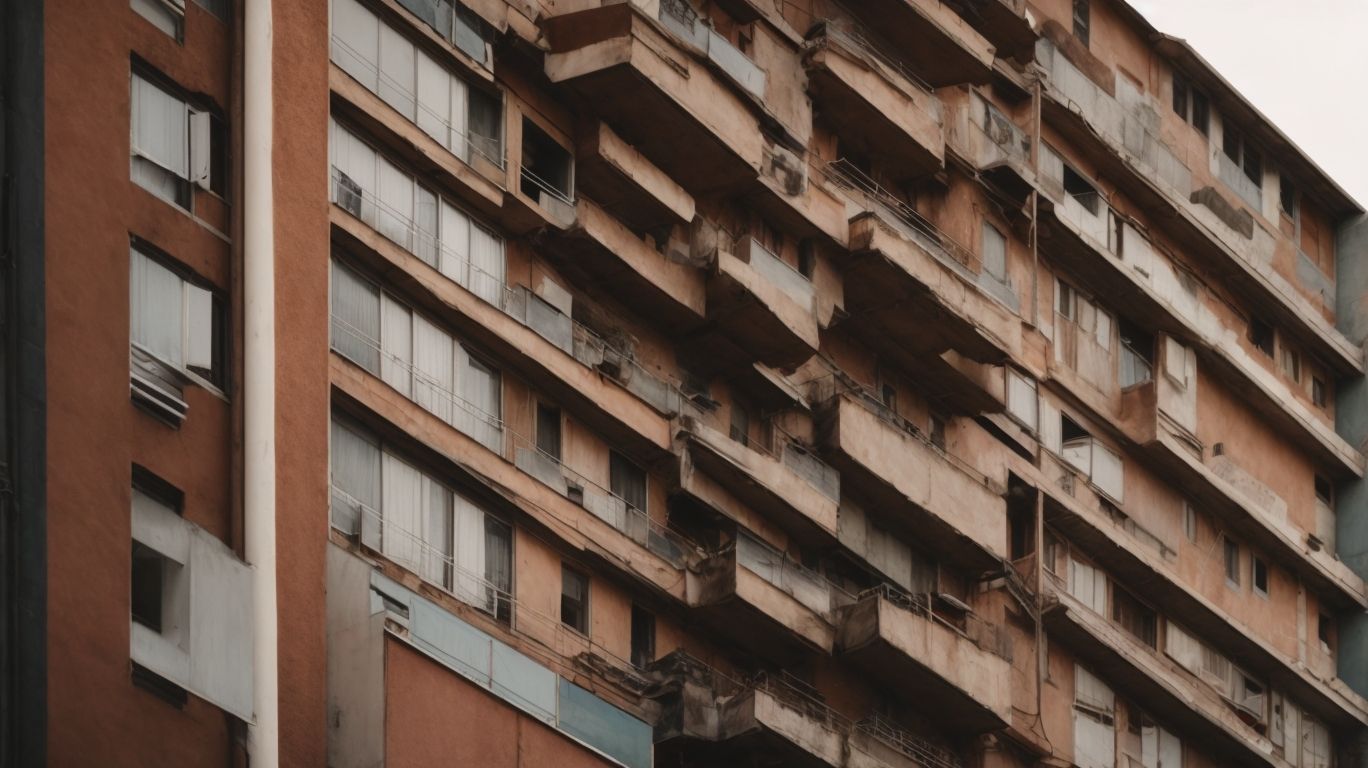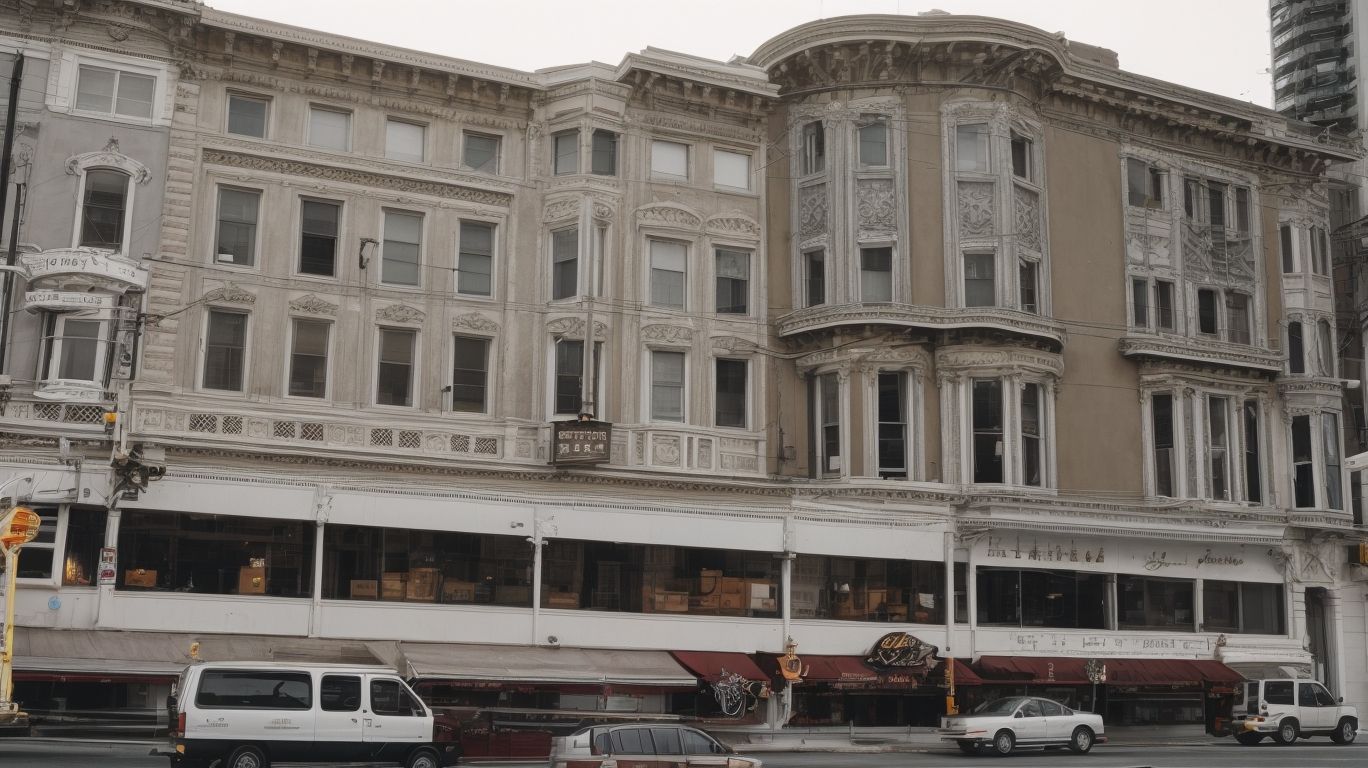
The Hidden Risks of Skipping Soft-Story Retrofitting: What SF Property Owners Need to Know
Soft-story retrofitting is a crucial process that many property owners in San Francisco need to be aware of. In this article, we will explore the importance of soft-story retrofitting, the risks of skipping it, and the specific requirements in San Francisco.
We will also discuss how property owners can get started with the retrofitting process, including the cost and potential financial assistance available. Understanding these key points is essential for ensuring the safety and stability of buildings in earthquake-prone areas like San Francisco.
What Is Soft-Story Retrofitting?
Soft-story retrofitting involves reinforcing the structural integrity of buildings, particularly those with open parking or commercial spaces on the ground floor and residential units above, to enhance their seismic resistance and reduce the risk of structural damage during earthquakes.
This retrofitting process is crucial for property owners in San Francisco, where the prevalence of soft-story buildings poses significant risks during seismic events.
By implementing retrofitting measures, property owners can mitigate potential structural vulnerabilities, safeguard their investments, and ensure the safety of occupants.
Construction and engineering professionals play a vital role in assessing the existing structural conditions, designing appropriate retrofitting solutions, and overseeing the implementation to achieve seismic compliance and building stability.
Ultimately, soft-story retrofitting not only protects properties from potential damage but also contributes to the overall resilience of urban infrastructure in earthquake-prone regions.
Why Is Soft-Story Retrofitting Important?
Soft-story retrofitting is crucial for SF property owners as it not only safeguards property values but also ensures comprehensive risk assessment, reinforces structural integrity, and aligns with compliance measures for seismic upgrades, mitigating structural vulnerability in the event of seismic hazards.
This proactive measure addresses the potential risks posed by earthquakes, creating a safer environment for both occupants and the surrounding community. It underscores the commitment of property owners to prioritize the safety and well-being of their tenants, fostering a sense of trust and security in their real estate investments.
The seismic upgrades not only bring peace of mind but also contribute to the long-term sustainability and marketability of the property, enhancing its appeal to potential buyers or tenants.
What Are the Risks of Skipping Soft-Story Retrofitting?
Skipping soft-story retrofitting exposes SF property owners to significant risks, including potential injury or loss of life, extensive property damage, heightened risk factors, and the inability to implement effective hazard mitigation and risk avoidance strategies, impacting property investment and long-term security.
In earthquake-prone areas such as San Francisco, the risk of soft-story buildings collapsing during seismic activity is high. This poses a significant danger to occupants and neighboring properties. Retrofitting these structures is essential to mitigate these risks and ensure the safety and resilience of the community. It also helps protect the value and integrity of the property.
Structural Damage During Earthquakes
One of the primary risks of skipping soft-story retrofitting is the increased potential for severe structural damage to buildings during earthquakes. This is particularly due to identified structural weaknesses, compromised foundation integrity, and heightened susceptibility to seismic hazards. As a result, there is a high risk of extensive property damage for San Francisco property owners.
This can result in devastating consequences, as compromised building structures may not be able to withstand the intense forces generated by seismic events. This puts occupants at risk and could lead to collapse of the building.
Without retrofitting, the structural vulnerabilities of soft-story buildings could exacerbate the impacts of ground shaking, amplifying the potential for destruction. This increases the likelihood of higher repair and reconstruction costs, as well as potential safety hazards for tenants and occupants during seismic events.
Financial Loss Due to Property Damage
Another risk of skipping soft-story retrofitting is the potential financial loss due to extensive property damage, leading to increased insurance liabilities, higher retrofit costs post-event, and diminished property values for SF property owners.
Property owners in San Francisco must consider the significant financial implications of neglecting soft-story retrofitting. A major earthquake or natural disaster could result in substantial structural damage, drastically escalating repair expenses. In addition, insurance companies may impose higher premiums or deny claims for damages related to the soft-story vulnerability.
The aftermath of a seismic event often incurs exorbitant retrofitting costs, far exceeding the investment required for preventive measures. Properties lacking proper seismic reinforcement may experience diminished market value, affecting owners’ potential returns on their investments.
Potential Injury or Loss of Life
Skipping soft-story retrofitting increases the risk of potential injury or loss of life for SF property owners and occupants. The absence of essential seismic retrofitting, structural modifications, and hazard mitigation escalates the overall risk factors associated with the building’s structural vulnerabilities.
This creates a high level of vulnerability to seismic events and amplifies the potential impact of natural disasters. Without the necessary retrofitting measures, the building’s structural integrity is compromised, making it susceptible to collapse or severe damage during an earthquake.
Addressing these risks through proactive retrofitting efforts can significantly enhance the building’s ability to withstand seismic forces and protect the lives and properties of those within.
What Are the Soft-Story Retrofitting Requirements in San Francisco?
In San Francisco, specific legal requirements and building codes mandate compliance procedures for soft-story retrofitting. These measures ensure structural integrity and seismic safety, but come with associated retrofit costs for property owners.
These mandates aim to address the vulnerability of older buildings with soft, weak, or open-front walls, particularly during seismic events. Property owners are required to conduct thorough structural evaluations, obtain engineering assessments, and implement the necessary retrofit measures to meet the city’s standards.
While these requirements may pose financial implications for property owners, the potential long-term benefits in terms of safety and property value cannot be overlooked.
Buildings Subject to Retrofitting
The soft-story retrofitting requirements in San Francisco apply to designated buildings, necessitating compliance measures for seismic upgrades and proactive property maintenance, requiring comprehensive risk evaluation for effective implementation.
The buildings subject to retrofitting in San Francisco include those with soft, weak, or open front wall lines, which are vulnerable to collapse in the event of an earthquake.
It’s imperative for property owners and stakeholders to adhere to the city’s regulations and guidelines for retrofitting, as this not only protects the structural integrity of the buildings but also ensures the safety of occupants and surrounding areas.
The process of retrofitting demands thorough risk assessment to identify potential weaknesses and prioritize upgrades, highlighting the significance of professional evaluations and expert input to achieve the desired level of seismic resilience.
Timeline for Compliance
Property owners in San Francisco are required to adhere to specific timelines for compliance with soft-story retrofitting. This ensures adherence to compliance procedures, enhances building stability, and preserves property through proactive measures, mitigating construction risks.
This process is crucial in meeting the city’s mandates to ensure the safety and resilience of buildings. Compliance with the retrofitting timelines is essential not only for individual property preservation, but also for safeguarding the community against potential hazards.
By taking proactive steps, property owners contribute to the overall resilience and stability of the city’s infrastructure. It also helps in reducing the risks associated with construction activities, fostering a safer environment for all stakeholders involved in the retrofitting process.
Penalties for Non-Compliance
Non-compliance with the soft-story retrofitting requirements in San Francisco may lead to penalties, emphasizing the significance of compliance measures, the adherence to legal requirements, and the impact on risk management and property development for property owners.
Property owners failing to adhere to the mandated retrofitting deadlines may face severe financial repercussions, including hefty fines and potential litigation.
The lack of compliance can significantly elevate the risk of structural failure during seismic events, posing a threat to occupants and the surrounding community.
Ensuring full compliance not only mitigates these risks but also contributes to sustainable property development and fosters a safer urban environment for all stakeholders.
How Can Property Owners Get Started with Soft-Story Retrofitting?
Property owners can initiate the soft-story retrofitting process by consulting with a qualified structural engineer, establishing risk management protocols, adhering to construction standards, and prioritizing compliance measures to ensure seismic safety and building stability.
In the early stages of the retrofitting process, it is crucial to take these initial steps. A key role is played by structural engineers in assessing the structural integrity of the building and designing appropriate retrofit solutions to mitigate seismic vulnerabilities.
Property owners should closely collaborate with the engineer to address the specific needs of their property and ensure that the retrofitting process meets all necessary construction and safety standards. By implementing effective risk management and proactive compliance measures, property owners can enhance the resilience of their structures and contribute to a safer built environment.
Consulting with a Structural Engineer
The first step for property owners is to engage in comprehensive consultations with a reputable structural engineer, facilitating thorough risk assessment, risk avoidance strategies, and informed property investment decisions related to soft-story retrofitting.
Consulting with a structural engineer is crucial for evaluating the structural integrity of buildings and identifying risks in soft-story structures. This process provides property owners with valuable insights to make informed decisions about retrofitting options, ensuring safety and longevity. The engineer’s recommendations can prevent structural failures and costly repairs, protecting the property’s investment value.
Obtaining Necessary Permits
Property owners must prioritize obtaining the necessary permits for soft-story retrofitting, aligning with compliance measures, engaging in comprehensive construction planning, and exercising effective property management to meet all legal requirements.
This process not only ensures the safety and stability of the property but also demonstrates a commitment to community and structural resilience.
By adhering to the local building codes and regulations, property owners contribute to the overall safety of the neighborhood and enhance the value of their own investments. Securing the proper permits also facilitates a smoother construction process, reduces potential liabilities, and fosters positive relationships with city authorities and inspectors.
Hiring a Licensed Contractor
Property owners should enlist the services of a licensed contractor specializing in soft-story retrofitting, ensuring the implementation of seismic upgrades, execution of engineering solutions, and deployment of effective mitigation strategies for long-term property preservation.
This approach guarantees the incorporation of seismic retrofit measures that align with building codes and regulations, significantly reducing the risk of structural damage during seismic events.
Licensed contractors possess the expertise to carefully analyze the soft-story structure, identifying tailored engineering solutions to reinforce its stability and resilience. Effective mitigation strategies, such as installing shear walls and structural steel elements, can be implemented to enhance the property’s ability to withstand seismic forces, safeguarding the occupants and preserving the value of the building over time.
What Is the Cost of Soft-Story Retrofitting?
The cost of soft-story retrofitting varies based on multiple factors, including the building’s structural vulnerabilities, retrofitting requirements, potential financial assistance, impact on property values, and the role of insurance coverage for SF property owners.
When considering retrofitting a building, property owners must consider the unique needs of their property, including its size, age, and current structural condition. These factors can greatly impact the cost of the retrofit. However, some property owners may be eligible for financial assistance or incentives from local or state programs, which can help alleviate the financial burden.
In addition, retrofitting can also increase the value of a property over time by improving its safety and insurability. This can potentially offset some of the initial costs. It’s important for property owners to understand how retrofitting may affect their insurance coverage, as this can play a significant role in managing long-term costs and minimizing risks.
Factors Affecting Cost
The cost of soft-story retrofitting is influenced by various factors, such as risk evaluation, construction risks, hazard mitigation measures, and the impact on property development for SF property owners. It is crucial to have a comprehensive understanding of these cost determinants in order to accurately assess the expenses involved.
When it comes to retrofitting projects, several factors play a crucial role in determining the overall expenses. One of these factors is risk evaluation, which involves assessing the building’s vulnerability. This assessment can impact the scope and scale of necessary retrofitting measures, making it an important consideration in the cost estimation process.
In addition to vulnerability, construction risks also contribute significantly to the total retrofitting cost. These risks can include material costs, labor expenses, and unforeseen challenges that may arise during the construction process. It is important to account for these potential risks in order to avoid unexpected expenses and delays.
Furthermore, implementing hazard mitigation measures, such as installing seismic retrofit systems, can add even more expenses to the overall cost. These measures are crucial for ensuring the safety and stability of the building, but they can also have a significant impact on the property’s overall development and financial considerations.
Potential Financial Assistance
SF property owners may explore potential financial assistance programs aimed at mitigating the impact of retrofit costs, aligning with property investment strategies, adhering to legal requirements, and facilitating effective risk management in the context of soft-story retrofitting.
There are various opportunities available for property owners to offset the costs of retrofitting, such as grants from the city, federal tax credits, low-interest loans, and partnerships with private financing institutions.
By taking advantage of these avenues, property owners can not only fulfill their legal obligations for soft-story retrofitting, but also protect and enhance the value of their real estate investments. This proactive approach allows them to manage the financial implications and mitigate seismic risks for their properties.




No Comments